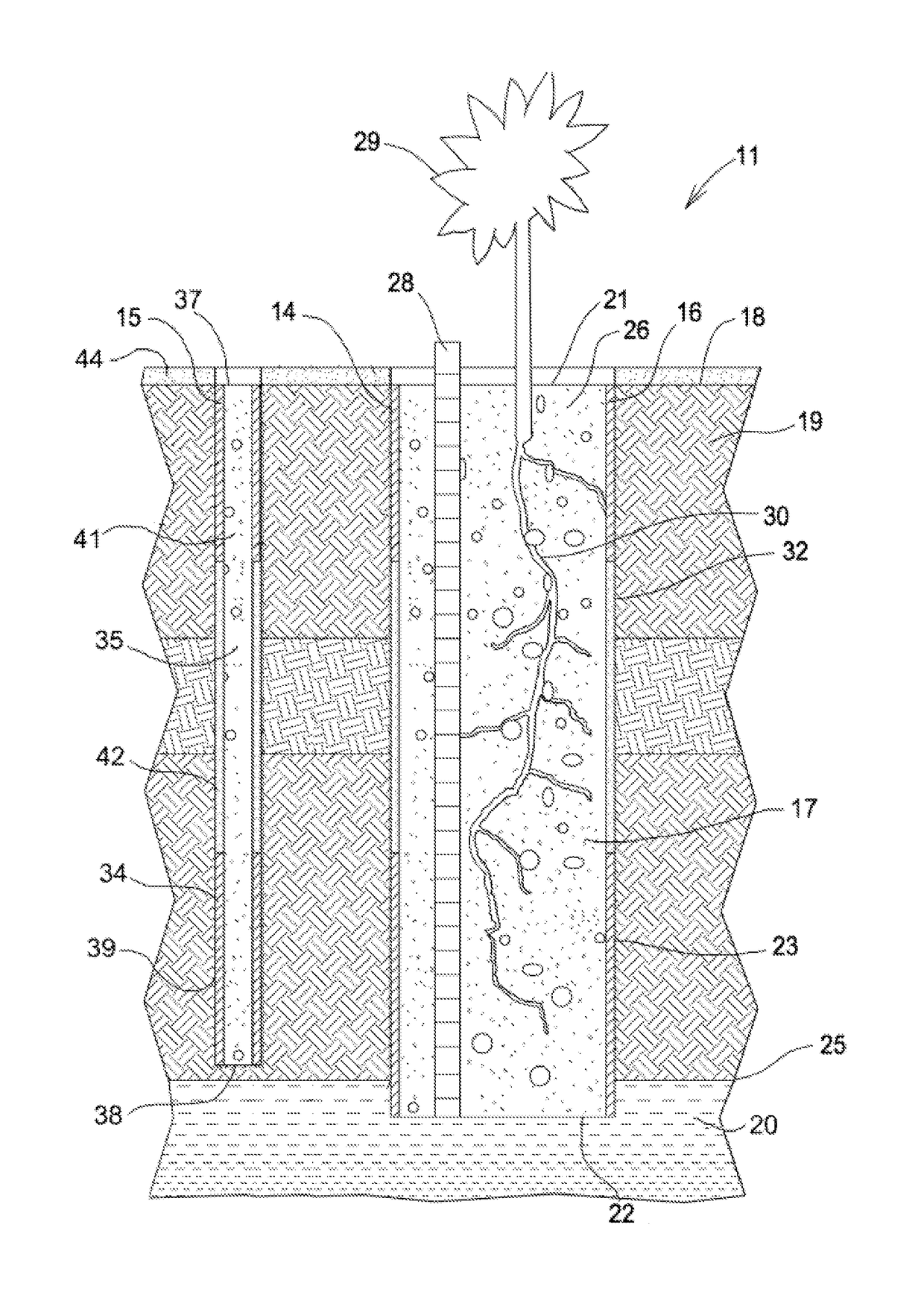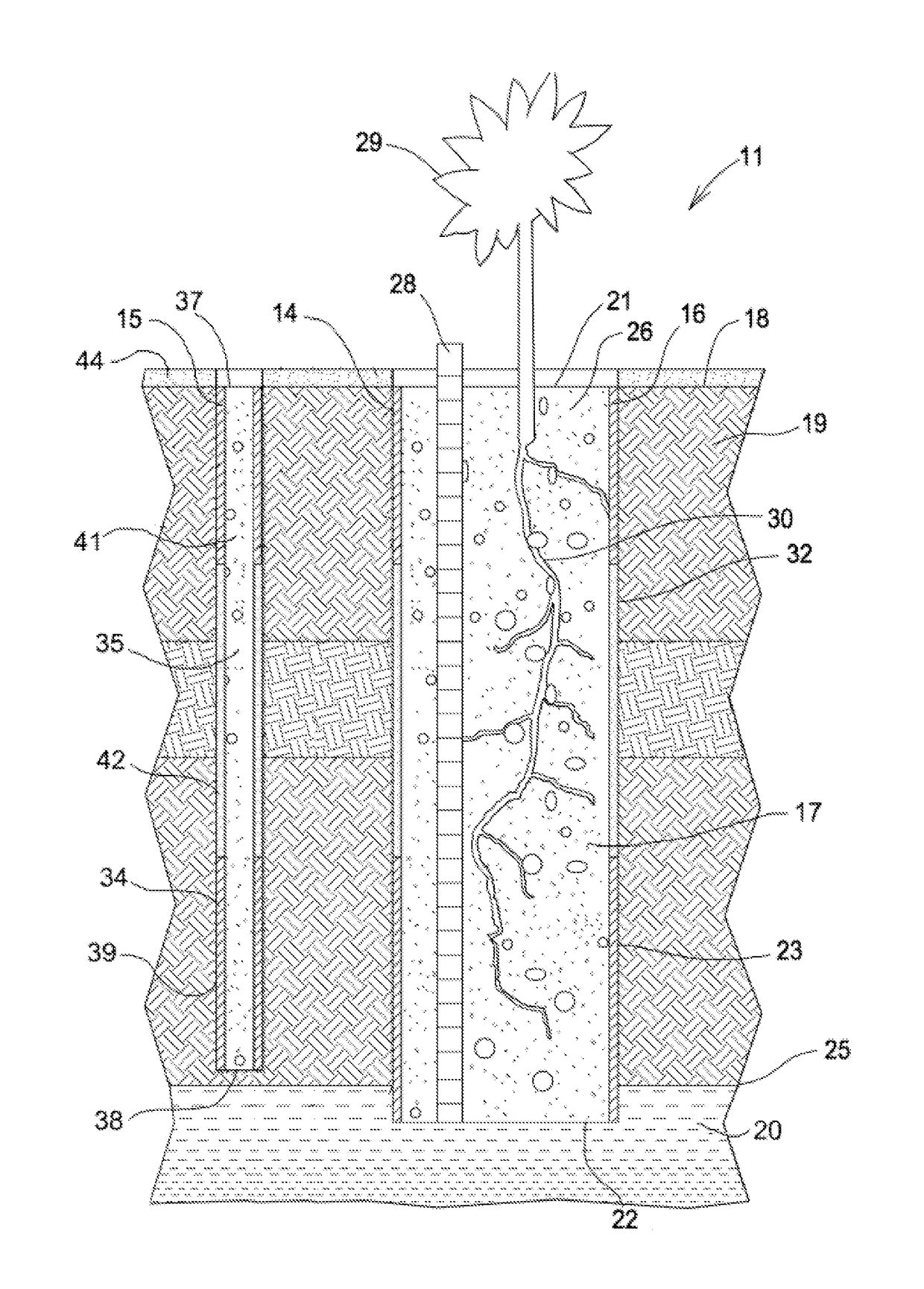Soil gas and groundwater remediation system and method
a technology of soil gas and groundwater, applied in the field of soil and groundwater remediation, can solve the problems of significant environmental impact, cancer or other serious health impairment in people, and very common groundwater contamination
- Summary
- Abstract
- Description
- Claims
- Application Information
AI Technical Summary
Benefits of technology
Problems solved by technology
Method used
Image
Examples
Embodiment Construction
[0016]Referring to the FIGURE, a system 11 for intercepting, treating and venting vapors from contaminated soil and groundwater, embodying features of the present invention, a large borehole 14 and at least one spaced small borehole 15. The large borehole 14 has a liner 16 and fill material 17. The large borehole 14 has a selected diameter and is drilled from ground level 18 downwardly to a selected depth through the soil 19. The large borehole 14 has an open top end 21 at ground level 18, a spaced bottom end 22 at the selected depth, and an inwardly facing outer wall 23 of the soil 19 that extends from the top end 21 to the bottom end 22. The bottom end 22 can be located above, at or below the water table 25. The large borehole 14 defines a borehole cavity 26.
[0017]The liner 16 fits into the large borehole 14 against the outer wall 23, and extends around the borehole cavity 26 from the top end 21 to the bottom end 22. The liner 16 is gas permeable and can be made from organic or in...
PUM
| Property | Measurement | Unit |
|---|---|---|
| vapor pressures | aaaaa | aaaaa |
| Henry's Law Constant | aaaaa | aaaaa |
| diameter | aaaaa | aaaaa |
Abstract
Description
Claims
Application Information
 Login to View More
Login to View More - R&D
- Intellectual Property
- Life Sciences
- Materials
- Tech Scout
- Unparalleled Data Quality
- Higher Quality Content
- 60% Fewer Hallucinations
Browse by: Latest US Patents, China's latest patents, Technical Efficacy Thesaurus, Application Domain, Technology Topic, Popular Technical Reports.
© 2025 PatSnap. All rights reserved.Legal|Privacy policy|Modern Slavery Act Transparency Statement|Sitemap|About US| Contact US: help@patsnap.com


